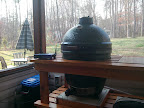Originally posted by Bryan Mayland:
<BLOCKQUOTE class="ip-ubbcode-quote"><div class="ip-ubbcode-quote-title">quote:</div><div class="ip-ubbcode-quote-content">Originally posted by Ben Lawson:
Any ideas? I bought a atmega chip from sparkfun with a bootloader on it.
Did you get the one with the
Duemilanove bootloader or the
Optiboot bootloader? Try this and see if you get anything
hmdude -b57600 -v -v -v -v
(You'll also still need to do the hold-the-RESET-button thing) </div></BLOCKQUOTE>
Here's what I get
root@OpenWrt:/tmp# hmdude -b57600 -v -v -v -v
hmdude: compiled on Feb 15 2012 at 15:43:06
Using port: /dev/ttyS1
Starting sync (release RESET now)...
hmdude: Send: . [0a] / [2f] r [72] e [65] b [62] o [6f] o [6f] t [74] . [0a]
hmdude: Send: 0 [30] [20]
hmdude: Send: 0 [30] [20]
hmdude: Recv: . [00]
hmdude: stk500_getsync(): not in sync: resp=0x00
Sync: ERROR
hmdude: Send: 0 [30] [20]
hmdude: Send: 0 [30] [20]
hmdude: ser_recv(): programmer is not responding
Sync: ERROR
hmdude: Send: 0 [30] [20]
hmdude: Send: 0 [30] [20]
hmdude: ser_recv(): programmer is not responding
Sync: ERROR
hmdude: Send: 0 [30] [20]
hmdude: Send: 0 [30] [20]
hmdude: ser_recv(): programmer is not responding
Sync: ERROR
hmdude: Send: 0 [30] [20]
hmdude: Send: 0 [30] [20]
hmdude: ser_recv(): programmer is not responding
Sync: ERROR
And this is the atmega I got from sparkfun, ATmega328 with Arduino Optiboot (Uno)

